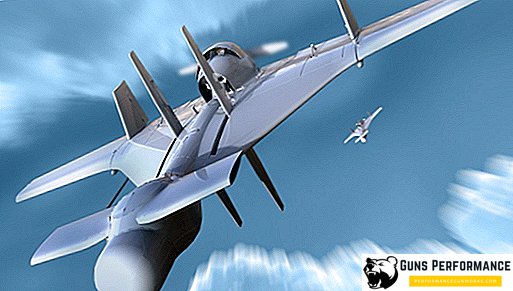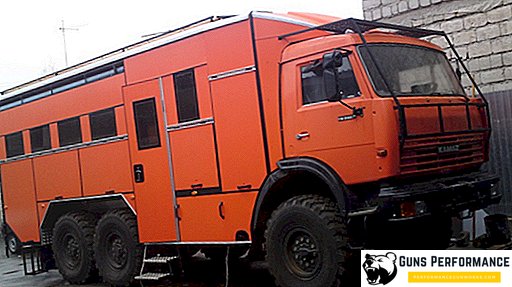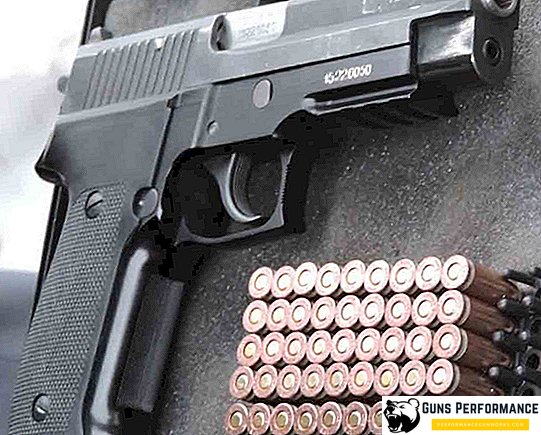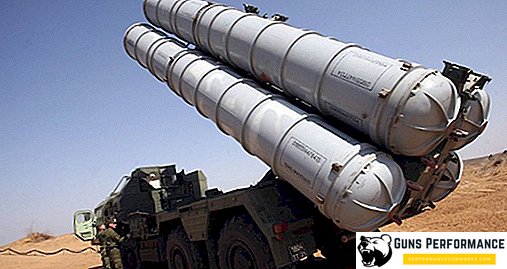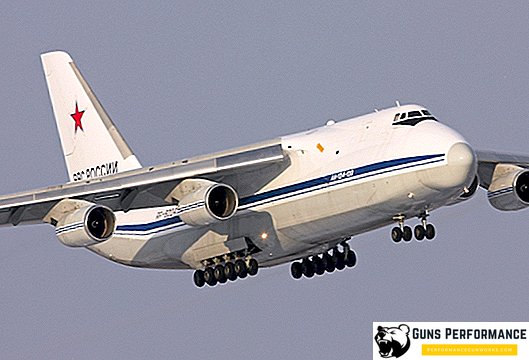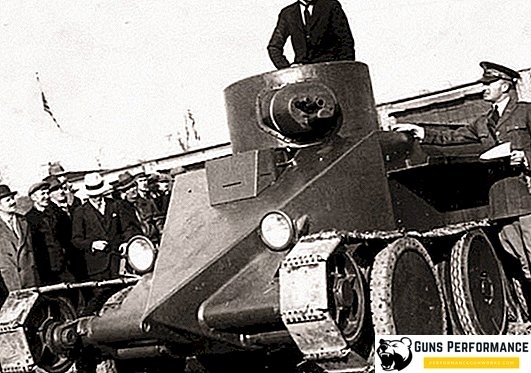
The MiG-3 is a Soviet high-speed, high-altitude piston fighter created on the eve of the start of World War II. Because of its structural and operational features, the MiG-3 was never able to become a full-fledged front-line fighter.
However, this machine was actively used as an air defense aircraft: the high speed of a fighter at high altitudes allowed Soviet pilots to successfully fight German bomber aircraft.
At the start of the war, the MiG-3s accounted for about a third of the Soviet air defenses. They guarded the sky of Moscow, Leningrad and other Soviet cities.
Serial production of the aircraft did not last long: from December 1940 to December 1941. A total of 3178 aircraft were produced, the cost of one car was 158 thousand rubles (as of May 1941).
Operation of the MiG-3 was discontinued in 1943, the last cars due to wear and lack of spare parts were written off in early 1944. According to official statistics, the account of the MiG-3 fighters 710 shot down enemy aircraft, 43 of which were destroyed at night.
The history of the creation of this fighter is very dramatic, it is fully consistent with the spirit of the complex and sometimes tragic era of the last pre-war years.

History of creation
The development of the MiG-3 fighter is closely connected with the name of the talented Russian and Soviet aircraft designer Nikolai Polikarpov. In the 30s he was called the Soviet "king of fighters". However, at the end of this decade, difficult times began in the life of Nikolai Nikolaevich.
During this period, he was engaged in the development of a new fighter I-180. The catastrophes that pursued this car seriously undermined confidence not only in it, but also in the designer himself. However, Polikarpov did not give up: in 1939 he proposed the creation of a high-speed, high-altitude fighter with characteristics superior to all existing domestic and foreign counterparts. On the plane it was planned to install the new engine Mikulin AM-35. He showed maximum power at an altitude of about six thousand meters, while the rest of the Soviet aviation engines reached a peak of power at heights of four or five kilometers.
Polikarpov believed that at high altitudes with lower atmospheric density, the fighter could reach speeds of 650 km / h, easily catching up with any enemy aircraft. Work on the new machine began in the summer of 1939, he received the designation I-200. The designers paid much attention to the aerodynamic properties of the aircraft, so the new fighter turned out to be very elegant, elegant, it had smooth and beautiful fuselage lines.
The project was ready by October 1939. Polikarpov sent it to the leadership of the country, wrote a cover note and waited for a response.
After the signing of the Soviet-German Molotov-Ribbentrop Pact, relations between the USSR and the Third Reich became practically allied. The Soviet leadership agreed to send a delegation to Germany to get acquainted with the latest samples of German technology and enterprises of the aviation industry. Polikarpov also joined this delegation.
After returning from a business trip, Polikarpov expected a very unpleasant surprise. Its design office was practically crushed: a significant part of the production facilities and personnel were transferred to a new design bureau, which was created under the then unknown engineers Gurevich and Mikoyan. Moreover, the almost ready draft of the I-200 fighter was also given to them for revision.
The best designers (about 80 people), who previously worked at the Polikarp Design Bureau, were transferred to a new design bureau. People were impacted by the "carrot" and the "carrot". Those who doubted were told that Polikarpov was “a goner”, that he would soon be shot, and Mikoyan’s brother was a member of the Politburo, that is, he had support at the very top.
For Polikarpov it was a terrible blow. He tried to protest, but this gave no results. For many decades, it was Mikoyan and Gurevich who were officially considered the creators of the MiG-1 and MiG-3 aircraft, the shameful truth was discovered only in the early 90s, after the discovery of previously secret documents.
Polikarpov did not give up. In early 1941, he created the I-185 fighter, which by its characteristics surpassed all Soviet counterparts of that time. However, under far-fetched pretexts, this car was never allowed into the series; preference was given to the Yak-9 fighter. The reason was the fact that Yakovlev at that time was the Deputy Commissar of the country's aviation industry. As an incentive prize, Polikarpov for the I-185 was awarded the Stalin Prize of the first degree. But this was hardly a consolation for the Soviet pilots who fought at the front.

In the spring of 1940, the first prototype fighter was manufactured under the designation MiG-1. He rose to the sky on April 5, 1940. The plane had excellent speed characteristics (628 km / h), but the car also had serious flaws. In flight, the lantern did not open, making it impossible for an emergency evacuation of the pilot. The cabin was poorly ventilated, which caused discomfort for the pilots. But much more serious were the problems with the controllability of the aircraft: because of the rear centering of the car, it easily entered into a tailspin, from which it was difficult to pull it out. This feature led to increased pilot fatigue.
Despite the shortcomings, in the summer of 1940, the MiG-1 was launched into a series. Until the end of the year, they managed to manufacture one hundred aircraft and send them to combat units. He would have been released further, but the country's leadership was preoccupied with the range of Soviet fighters. All design bureaus were ordered to increase the range of single-engine fighters to 1,000 km, and twin-engine fighters to 2,000 km.
In the Mikoyan Design Bureau, urgent work began on the modernization of the MiG-1. Under the cockpit installed another tank with a capacity of 250 liters. In order to maintain the centering of the aircraft, the motor mount had to be lengthened to install the AM-35A engine. The range of the aircraft was increased to 1 thousand km. The new machine received the designation MiG-3.

It is not entirely clear why it was necessary to increase the range of the aircraft. Weighting machines, due to the installation of additional tanks on them, led to a decrease in maneuverability, speed and climb rate - the main flight characteristics for any fighter.
However, despite the increased take-off weight, during the tests the MiG-3 fighter showed a speed of 640 km / h at an altitude of 7 thousand meters. In 1941, this aircraft became the fastest fighter in the world.
Combat use
At the beginning of the war there was a very paradoxical situation: MiG-3 aircraft were much more than the pilots capable of flying them. The fighter was very difficult to fly. An experienced pilot on it turned into a medium one, an average pilot became a beginner, and inexperienced pilots could not fly it at all. Rear alignment made the aircraft very "heavy" and little maneuverable. In addition, the MiG-3 had a very high landing speed (144 km / h), which at the slightest error could lead to a catastrophe.

The MiG-3 had problems with the cockpit lantern: at high speeds it often did not open, which prevented the pilot from leaving the wrecked plane. The fighter engine was notable for its high fire risk and had a very low lifespan.
But the most important thing was different: already the first months of the war showed that the main air battles took place at low and medium altitudes, where the MiG-3 seriously lost to both Soviet and German fighters. The units that were armed with the MiG-3 suffered huge losses in the first months of the war, this clearly showed that the aircraft was not suitable as a front-line fighter.
In the USSR, several types of fighters were mass-produced, but there was an acute lack of effective attack aircraft. This decided the fate of the MiG-3: by Stalin’s personal order, the fighter was discontinued, and the vacant facilities used for the production of IL-2.
The remaining MiG-3 fighters were transferred to the air defense forces. The impressive ceiling of the car and its excellent speed at high altitudes allowed the MiG-3 to successfully fight enemy bombers. Often this aircraft was used as a night fighter.
In addition, the MiG-3 was successfully used as a fighter-bomber. The fact is that he was the only machine of the new generation on which bomb racks were installed and the bomb dropping system was brought. On the MiG-3 could hang two FAB-50 or eight missiles. Used MiG-3 and as a reconnaissance aircraft.
On the MiG-3, Pokryshkin, the best Soviet ace of the Great Patriotic War, won his first victory; he shot down Bf-109E.

Description
The MiG-3 is a single-engine, free-carrying low-wing monoplane. The fighter had a closed cockpit and a retractable three-post chassis.
The nose part of the MiG-3 fuselage and the engine mount were made of chromansil pipes, which were covered with duralumin sheets fixed on the locks from above. The center-plane of the aircraft was completely all-metal, the tail part of the fuselage and the wing console were wooden. The tail section was a monocoque structure with stringers and frames lined with several layers of plywood on top. Horizontal tail, ailerons and steering wheel were made of duralumin.

The pilot's cockpit lantern consisted of three parts: a fixed canopy, a movable central part that was shifted back and a rear fixed part. During an emergency escape of the cab, the rear part of the lantern was discharged with the help of a special spring mechanism, dragging along the central part of the lantern. In the later series of aircraft, the visor was made of bulletproof glass.
Due to the use of a powerful large engine, the cockpit was located at the rear of the fuselage.
Two fuel tanks with a total capacity of 640 liters were located in the center section and the fuselage of the aircraft. Two additional fuel tanks could be hung under the wings.
Solid wood wing consoles had a frame of spar, stringers and nevrur, on top of the wing was sheathed with several layers of bakelite plywood.
The wooden keel was integral with the fuselage tail section, the stabilizers and the rudder had a duralumin construction, sheathed in canvas.

MiG-3 had a tricycle landing gear with a tail wheel. The mechanism of its release is pneumatic. The main landing gear were fixed on the end of the neurone center section, they were removed in the direction of the fuselage and went into special niches. In the retracted state, the chassis were covered with flaps. To determine the position of the main landing gear used electrical alarm with mechanical backup. The rear wheel of the crutch type had oil-air depreciation, in the retracted state was closed by a flap.
The MiG-3 was equipped with an AM-35A liquid-cooled engine, the take-off engine power was 1350 liters. with. The fighter was equipped with a three-blade propeller with a diameter of three meters. The water radiator was under the cockpit, which was separated from the engine by a fire wall.
Armament MiG-3 included a 12.7-mm machine gun BS and two 7.62-mm machine gun ShKAS. They were mounted above the engine.
Some aircraft were additionally armed with two 12.7-mm machine guns Berezina, which were suspended in special gondolas under the wings.
Oxygen equipment was installed on the MiG-3 fighter for the first time; it consisted of the device itself, an oxygen cylinder and a mask with a hose.
Specifications
The following are the characteristics of the MiG-3 fighter:
- wing span - 10.02 m;
- length - 8.25 m;
- height - 3.5 m;
- wing area - 17.44 square meters. m;
- takeoff weight, kg - 3350;
- engine - AM-35A;
- power - 1350 hp;
- Max. speed, km / h - 640 km / h;
- practical range - 576 km;
- practical ceiling - 12000 m.



